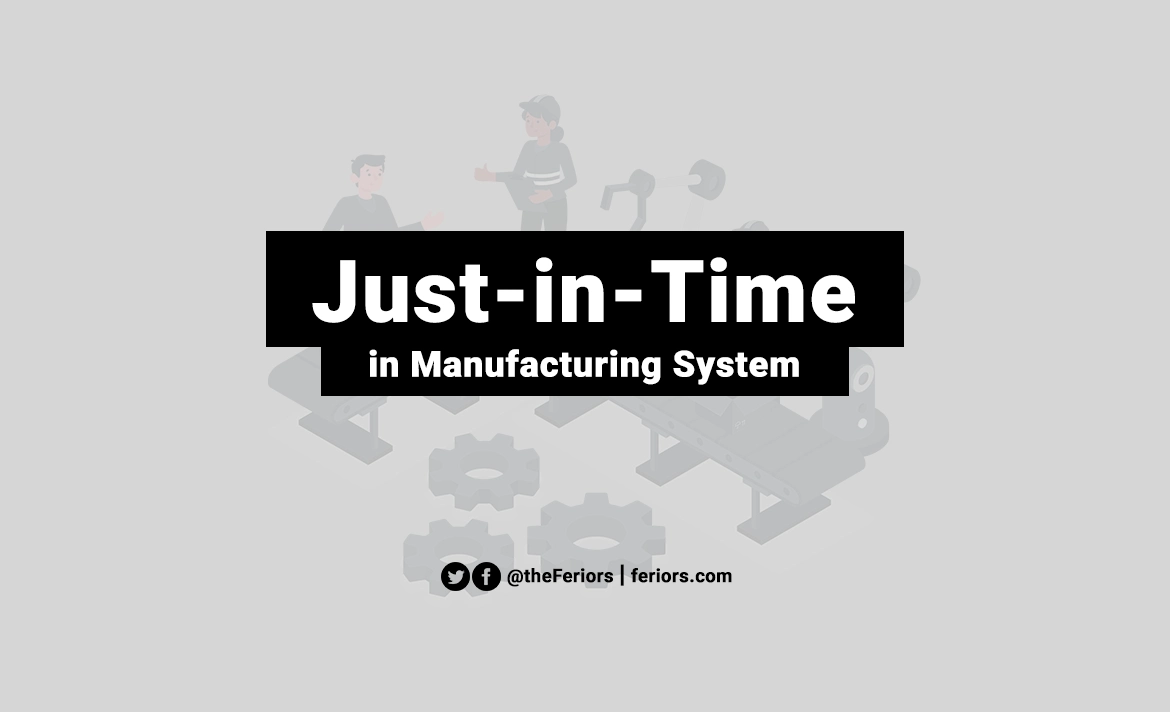What is Just-in-Time (JIT)
Just-in-time manufacturing is a system that focused on reducing waste from the inventory and manufacturing process by calling for subassemblies and components to be manufactured in the amount needed and delivered to the next stage of the manufacturing. Instead of stocking tons of finished components in the inventory.
In the just-in-time manufacturing system, a customer order triggers a production process to start. The manufacturing plants do not produce the next lot of product until the next stage of production (such as the assembly process) demands the components. But the production line will order material from the suppliers only when they need it.
Same as the finished products, instead of storing them in the warehouse, the company adopting the JIT philosophy will deliver the products immediately to the customers.
The just-in-time manufacturing making only “what is needed, when it is needed, and in the amount needed”. This is also called zero inventory.
Key Points
- Just-in-time manufacturing (JIT) is a system that focused on reducing waste from the inventory and manufacturing process by making only “what is needed, when it is needed, and in the amount needed”.
- The advantage of just-in-time reducing non-essential costs from the manufacturing process.
- The disadvantage of just-in-time manufacturing is the risk of stockouts if your suppliers have any problems fulfilling orders, the whole system needs to stop for it.
Advantages of Just-in-Time
The just-in-time manufacturing system is in contrast with traditional production which requires extreme costs for the inventory. To put it simply, the advantages of the just-in-time (JIT) manufacturing system is reducing non-essential costs from the manufacturing process, also known as the 7 wastes:
- Waste of overproduction – this can lead to any other type of waste because the overproduction causes the company needs to stock exceed finished products.
- Waste of inventory – this wastes resources through costs of storage, transportation within the inventory, obsolete products, and other maintenance costs.
- Waste of motion – the dangerous movement sometimes can harm people, equipment, or even the product.
- Waste of waiting – the manufacturing must be stopped when it needs to wait for the other process, the flow of operations should be smooth and continuous to maximize productivity.
- Waste of defect – the defective products from the manufacturing plants make the company need to replace (or fix) the product for the customer. This is not just about the cost of repairing, but this affects directly the customer’s expectation.
- Waste of processing – doing more than the standard process for the same result means the company has more cost. In contrast, fewer process allow teams to focus on building high-quality products.
- Waste of transportation – move resources when the movement doesn’t add value to the product sometimes it can cause costly damage to the product.
On the downside, the just-in-time manufacturing increases the risk of stockouts if your suppliers have any problems fulfilling orders, the whole system needs to stop and wait for it.
References: Toyota Production System and How does Just-in-Time Production Work?




